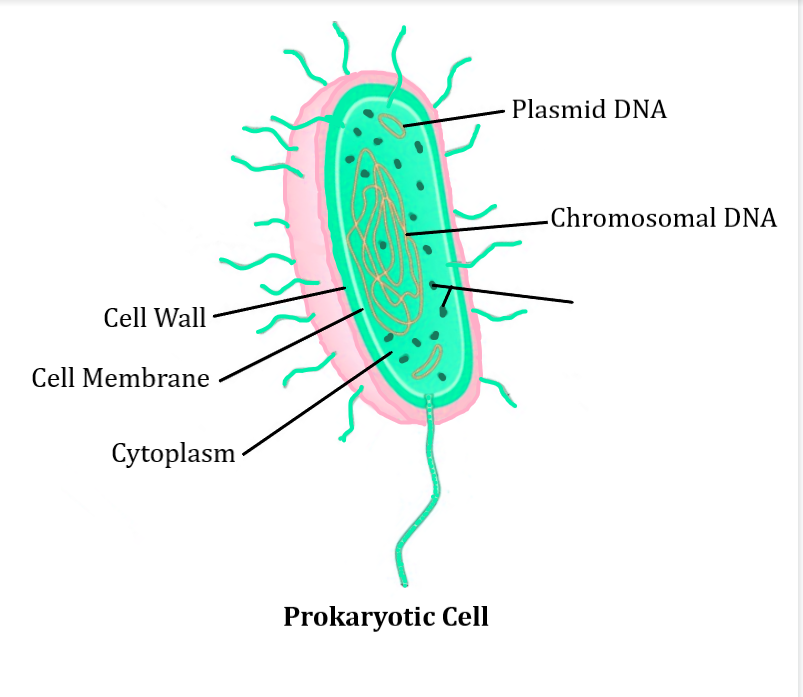
Why are the cells generally of a small size?
Answer
479.1k+ views
Hint: Small size of the cell makes it easy to carry metabolic movement similar to the movement of things from smaller utensils and the nucleus can also control the cytoplasmic processes in a good manner.
Complete answer:
Cells are so little so that they can maximize their ratio of area to volume. Smaller cells have a better ratio which allows more molecules and ions to be manipulated across the cell membrane per unit of cytoplasmic volume. Cells are so small because they have to be ready to get the nutrients in and therefore the waste out quickly. The important point is that the area to the volume ratio gets smaller as the cell gets larger. Thus, if the cell grows beyond a particular limit, not enough material is going to be ready to cross the membrane fast enough to accommodate the increased cellular volume. That's why cells are so small.
Additional Information:
Cells are of two types: eukaryotic, which contain a nucleus, and prokaryotic, which don't. Prokaryotes are single-celled organisms, while eukaryotes are often either single-celled or multicellular.

Note:
-The cell (from Latin cella, meaning "small room") is the basic structural, functional, and biological unit of all known organisms.
-A cell is the tiniest unit of life. Cells are often called the "building blocks of life". The smallest cell is Mycoplasma (PPLO-Pleuropneumonia like organisms). It's about 10 micrometers in size.
-The most important cell is an ovum of an ostrich.
-A cell type is a classification to distinguish between morphologically or phenotypically distinct cell forms within a species.
Complete answer:
Cells are so little so that they can maximize their ratio of area to volume. Smaller cells have a better ratio which allows more molecules and ions to be manipulated across the cell membrane per unit of cytoplasmic volume. Cells are so small because they have to be ready to get the nutrients in and therefore the waste out quickly. The important point is that the area to the volume ratio gets smaller as the cell gets larger. Thus, if the cell grows beyond a particular limit, not enough material is going to be ready to cross the membrane fast enough to accommodate the increased cellular volume. That's why cells are so small.
Additional Information:
Cells are of two types: eukaryotic, which contain a nucleus, and prokaryotic, which don't. Prokaryotes are single-celled organisms, while eukaryotes are often either single-celled or multicellular.

Note:
-The cell (from Latin cella, meaning "small room") is the basic structural, functional, and biological unit of all known organisms.
-A cell is the tiniest unit of life. Cells are often called the "building blocks of life". The smallest cell is Mycoplasma (PPLO-Pleuropneumonia like organisms). It's about 10 micrometers in size.
-The most important cell is an ovum of an ostrich.
-A cell type is a classification to distinguish between morphologically or phenotypically distinct cell forms within a species.
Recently Updated Pages
Glucose when reduced with HI and red Phosphorus gives class 11 chemistry CBSE

The highest possible oxidation states of Uranium and class 11 chemistry CBSE

Find the value of x if the mode of the following data class 11 maths CBSE

Which of the following can be used in the Friedel Crafts class 11 chemistry CBSE

A sphere of mass 40 kg is attracted by a second sphere class 11 physics CBSE

Statement I Reactivity of aluminium decreases when class 11 chemistry CBSE

Trending doubts
The reservoir of dam is called Govind Sagar A Jayakwadi class 11 social science CBSE

10 examples of friction in our daily life

Difference Between Prokaryotic Cells and Eukaryotic Cells

State and prove Bernoullis theorem class 11 physics CBSE

State the laws of reflection of light

What is the chemical name of Iron class 11 chemistry CBSE




